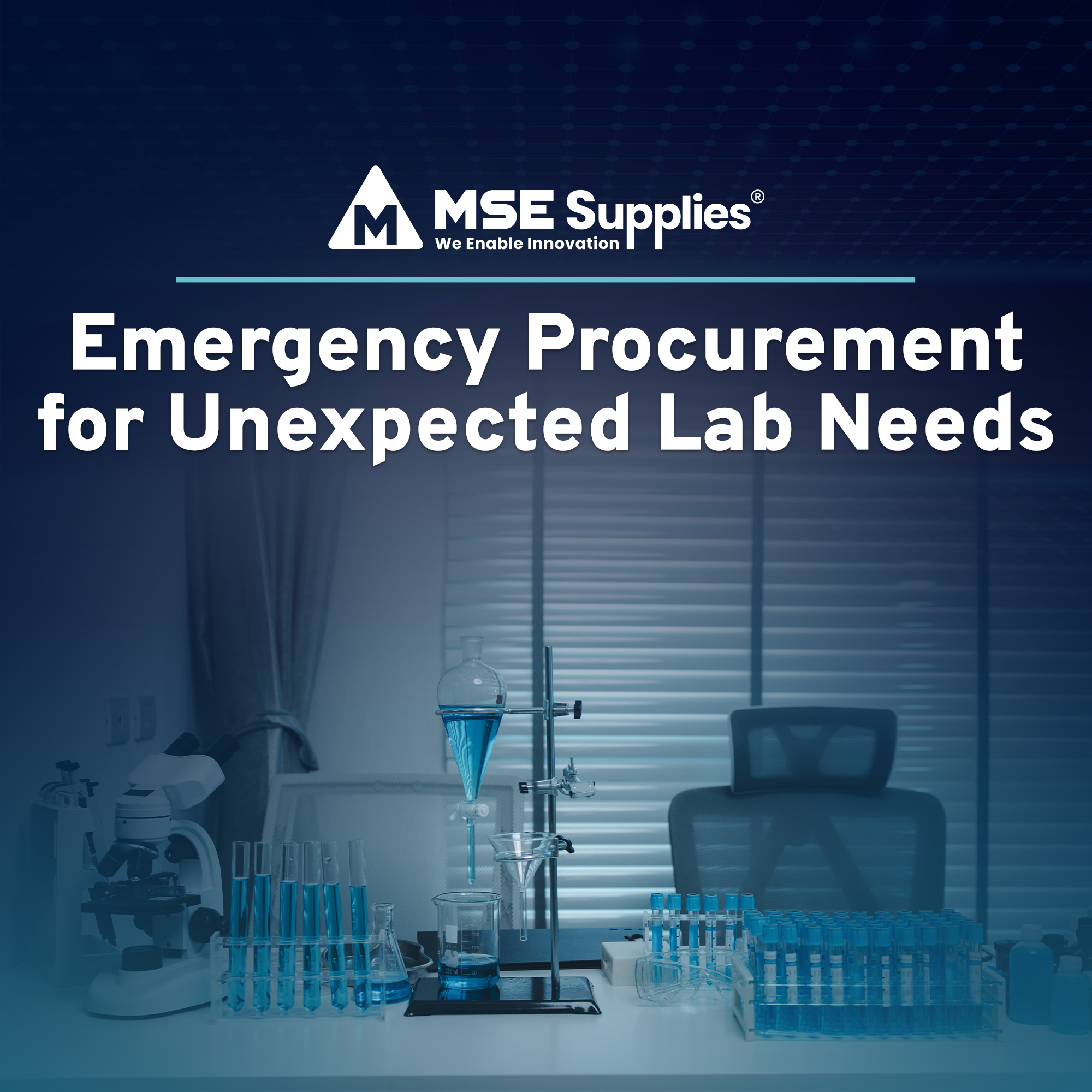The future of battery technology: Is the industry ready for disruption?
Posted by MSE Supplies on
Batteries are essential in our daily lives. They power our phones, cars and laptops, and there now exists an opportunity for them to power our homes and enterprise infrastructure. Yet while the technologies that rely on batteries are seeing revolutionary changes every year, we’re not seeing the same level of innovation for batteries. In fact, while there have been modest improvements to Lithium Ion technology, the Lithium Ion battery remains by and large very similar to when it was first commercialized in 1991.
The slow advancement in battery technology begs the question, why haven’t we seen an evolution in battery technology keep a similar pace to what we’ve seen in cellular devices or computers? I believe we’re now starting to experience a potential renaissance of battery technology. With demand for batteries skyrocketing, ever-expanding uses for non-fossil fuel energy and power extending techniques plateauing, we’re beginning to see some exciting new technologies arise. Following is a look into industry road blocks, demand and new technologies on the horizon.
The Battery Industry Progresses Incrementally
Developing new batteries is not an easy task. Broad research has been placed on elongating lifespans for batteries, including developing more complex algorithms, energy-sipping chips and a massive array of other “power saving” features integrated into our devices. We’re also seeing companies incorporate a diverse array of battery charging techniques into their technologies, all in an effort to optimize existing technology. While all of these innovations help mitigate the ever-increasing demand for energy, actual battery innovation remains incremental.
With Demand Comes Innovation
Despite the clever ways modern technology is squeezing more power out of batteries, it still isn’t meeting today’s rising demand for portable energy. Complex, power-hungry smartphones, tablets, and laptops, with increased functionality require more power from batteries than ever before.
Contrary to normal trends in innovation, the need for better battery performance has not necessarily led to huge improvements in battery technology. Instead the advancements have been centered on the manufacturing process. A recent example is Tesla’s Gigafactory, which brings the entire development process under one roof – an enormous structure in the Nevada desert. However, something potentially bigger and better was just introduced by MIT materials-science professor Yet-Ming Chiang, whose company 24M has received more than $54.5 million in funding for its efforts to revolutionize the way batteries are manufactured.
Without diving too deep into 24M’s technology, Chiang and his colleagues developed a “semi-solid” battery, which contains fewer and more advanced materials, increased electrode size and a decrease in the overall battery size. As a result, Chiang’s manufacturing platform produces a battery cell in two-and-a-half minutes with a machine that can fit into the average sized garage. This is a massive step forward in how Lithium Ion batteries will be produced in the future. Some readers may also remember Chiang as a pioneer in the nano materials space, who successfully commercialized this technology with the A123 battery company.
No Huge Breakthroughs, Just Exciting Steps Forward
In addition to new manufacturing techniques, there are other multiple exciting battery technologies emerging today. The majority are resurrections of older discoveries, such as micro, oxygen and solid state batteries. These legacy batteries are receiving a makeover, making them more efficient and ideally easier to replicate and mass-produce. In fact, just this year, Stanford scientists invented an aluminum battery, which they envision replacing alkaline and Lithium Ion batteries.
The most promising and perhaps revolutionary technology on the horizon is the liquid metal battery, also being pioneered at MIT by Professor Donald Sadoway. Information on this technology is currently limited, but there are already a few companies devoted to commercializing this technology, including MIT alums within AMBRI and Avalon battery, as well as Aquion which is aligned with Carnegie Mellon University. While this is an exciting niche within the battery industry, the liquid metal battery will be geared toward large scale energy storage (think solar arrays) and will likely not play a role in improving consumers’ experiences with everyday electronic devices.
What Does All This Mean for Consumers?
The truth is, battery technology is just beginning to emerge as a hotbed for innovation, and we’re still years away from seeing anything revolutionary hitting Batteries Plus Bulbs’ shelves. Consumers will likely still be using Lithium Ion batteries long into the foreseeable future, with companies like Tesla leading the way into packaging consumer-friendly options to power electric cars, homes and everything else.
For developing nations, large-scale Lithium Ion batteries like the Tesla Powerwall are an entryway into reliable power. It will enable consumers to wean themselves from unstable power grids, or in some cases, have power for the first time. For example, some of the world’s highest electricity costs exist in the Caribbean, an area of the world that also has plentiful sunshine and wind. Caribbean islands such as St. Maarten, Guadeloupe and Bonaire have the potential to lead the world in renewable energy sustainability, with batteries playing a key role. As the cost of batteries continues to decrease, largely in part due to improved manufacturing processes, I believe we’ll begin to see consumers in these regions relying on batteries more and more for their daily power needs.
Unfortunately, our dreams of oxygen-powered cars and microscopic batteries still aren’t quite here. Yet with increasing pressure for better and more affordable batteries, the pace of innovation is quickening and the race for the next big thing has, in my opinion, officially begun.
Source: ECN
Author: Oz Rahman, Batteries Plus Bulbs VP of Quality Assurance & Repair Operations
Share this post
- Tags: Battery



